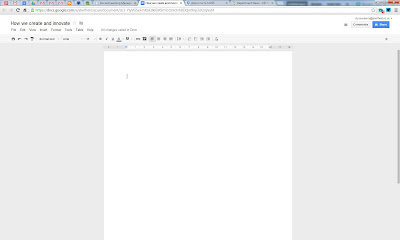It's been a while since I posted last, but quite a lot has happened since then. As a team, we've started to pull together the outcomes of our research to help us begin to plan what our new offering will look like, and what we are going to focus on when we launch. Our next steps will be to start thinking about a framework for our website, as this will be the key way that colleagues access development.
Something that has taken up a fair bit of my time is the Learning Management System giving up the ghost. A couple of weeks ago, CiCS informed me that the LMS had experienced a number of kernel panics, and that the system was at risk. I don't know what a kernel panic is, but it didn't sound good, so I made the decision to remove the links to LMS from our website. This has meant we have had to manage course bookings manually, which is a bit more administration for us. We are currently working in collaboration with colleagues in other departments on interim options to replace LMS before our September courses start, but also looking at a more long term replacement.
Which brings me on to what I wanted to talk about in this post, how to manage my workload. Most people I know keep to do lists so they know what tasks they have coming up. I am no exception. Where I might be an exception is that I do not use paper at all, let alone keep a paper diary. Here is a picture of my paper free (photos don't count!) desk for proof.
What I want is an electronic way of keeping a task list, that enables me to balance the different and changing priorities that I'm faced with. I used to use
Astrid, but they were acquired by Yahoo, and will shortly be no longer providing a service. Astrid worked by allowing you to set tasks with a due date, levels of priority, sync your tasks across mobile devices and a friendly octopus (the eponymous Astrid) would give you reminders, encouragement and praise for completing tasks.
I've been trying to find a replacement, but I'm not quite sure I've found the right thing yet. I've been using
Any.Do for a few months, which enables you to say what are you going to do today, tomorrow, upcoming and someday.
Every day, it asks you to have an "Any.Do moment", where you have to go through everything you have said you will do that day and either commit to do it or postpone it. If you do tasks you get
Kiip rewards.
I was finding that my tasks weren't syncing consistently between my phone, tablet and computer, so I didn't really feel like I had an accurate list of tasks.
As a result of this, I'm trying some new things
DropTask and
Trello.
DropTask is perhaps the least familiar type of task list, as it groups tasks visually into bubbles, and looks like this:
This is currently only a web based service, with no Android app, so doesn't fully meet my needs (I won't be able to access or add to my task list without a web connection). But what it seems to be really good for is visualising and collaborating on tasks. You can group bubbles of tasks together, and the size of each bubble changes based on the priority. You can also share this task list with other people, so I've set up one for our repositioning project to trial the collaborative aspect.
The final one I'm trying, which might be a winner, although I'm not sure yet is Trello. This works by setting up lists for different topics called boards. It is all fully customisable so you can call boards whatever you like, and have as many as you want. It has got Android apps, as well as a web access point, and you can prioritise tasks and get reminders.
At first glance it seems to tick a lot of boxes, but I guess I need to use it for a while to see if it actually does work for me. I think this is the key learning point for me, in that there is no right way of doing things, and that you shouldn't be afraid to change. Sometimes you need to change because of external circumstances (in my case Astrid closing down), other times because you don't feel things are working (Any.Do). The challenge that this presents is taking ownership of the change, and coming up with a solution to the problem that meets your needs.
In the spirit of sharing knowledge, I really want to hear what works for you, and how you've changed and adapted your approach over time. What would be great to hear is what you think you are going to do next.
















